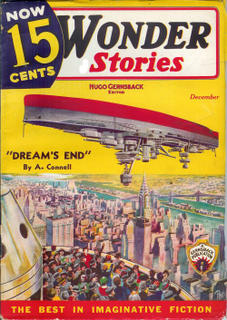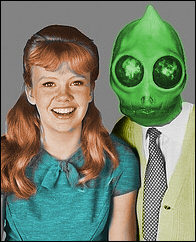As a kid I read everything I could get my hands on. Mostly I read Science Fiction and Horror. Thanks to the SF/Fantasy boom in the 70's there was plenty of reading material available. What I did not notice right away was that many of the books I read were not new novels, but were collections or adaptations of stories published or serialized years before in various pulp magazines, with some stories going back to the 1930's. Once I knew this I looked for pulp magazines for my collection.
In the 70's and 80's Downtown San Diego was a pretty good source for used book stores and crazy homeless people. I'd spend every other Saturday looking through the former while dodging the attention of the latter. Pulp magazines were relatively inexpensive when you could find them and I could get a copy for $2-3 each. The same book today is $35 dollars and more.
Here's the first pulp I ever bought...
Unlike many of the books, the cover story was pretty good. Human minds transplanted into giant war machines...can't beat that. Not a new idea even back when this was first published (Frankenstein, anyone?) but it was well done.
A few years ago I discovered the cover to the December 1935 Wonder Stories, featuring the short story Dream's End. This is just an amazing cover and is a fan favorite of many for the surreal aspect of a ship floating above the city. It is in my top 10 favorite pulp covers and I just recently purchased a copy of my own. I don't know how I missed this for so long but I had never before seen it in either anthology books or during my searches, which was amazing because it is a great Frank R. Paul image. Paul was a prolific pulp artist for decades. FYI for the comic fanatics: he also did the art to the cover of Marvel Comics #1, featuring the Human Torch.
Dream's End is a short story written by Arthur Connell. In it the world is breaking down, gravity changes, people and things vanish and strange things occur with increasing frequency. Soon, it is realized that the universe is a dream, and the dreamer is slowly waking up, causing the end of creation.
That story is basically an update on the old Zen tale of the Monk & the Butterfly, retold with a modern Science Fiction theme. My review of this story is that the cover art and interior illustration is far superior to the story itself. Oddly enough, this story has been referenced several times in various articles and papers, however briefly. The earliest reference I found to the story was in academia. In several instances it appears to have been mentioned without any first-hand knowledge of the subject matter. The phrasing of the early academic statement pops up later and leads me to believe that any subsequent mention was used only because it is was an obscure and interesting reference.
I believe I can safely speculate that such treasures would have stayed lost or unknown by the general public forever were it not for the proliferation of affordable scanners and inexpensive high-speed internet. Previously only scholars or hard core collectors were familiar with all the great work in the pulps. There are many thousands of examples of pulp art and published collections can't possibly present it all.
I would also say that the preservation of the rapidly decaying pulps, by the hobbyist-scanner and professional, has led in part to their increasing value and higher sales. Exposure of the product is never a bad thing from a business standpoint. When the images are archived by fans and made available on seller websites they must surely generate interest and sales. I know they did in my case. As I was made aware of an interesting book I was often inspired to track the original down for my collection.
For those interested in reading Dream's End, you can read it at this Flickr link.




























The tradition of doing a story illustration with a scene that was not in the story was alive and well, and probably deeply entrenched already.
ReplyDelete